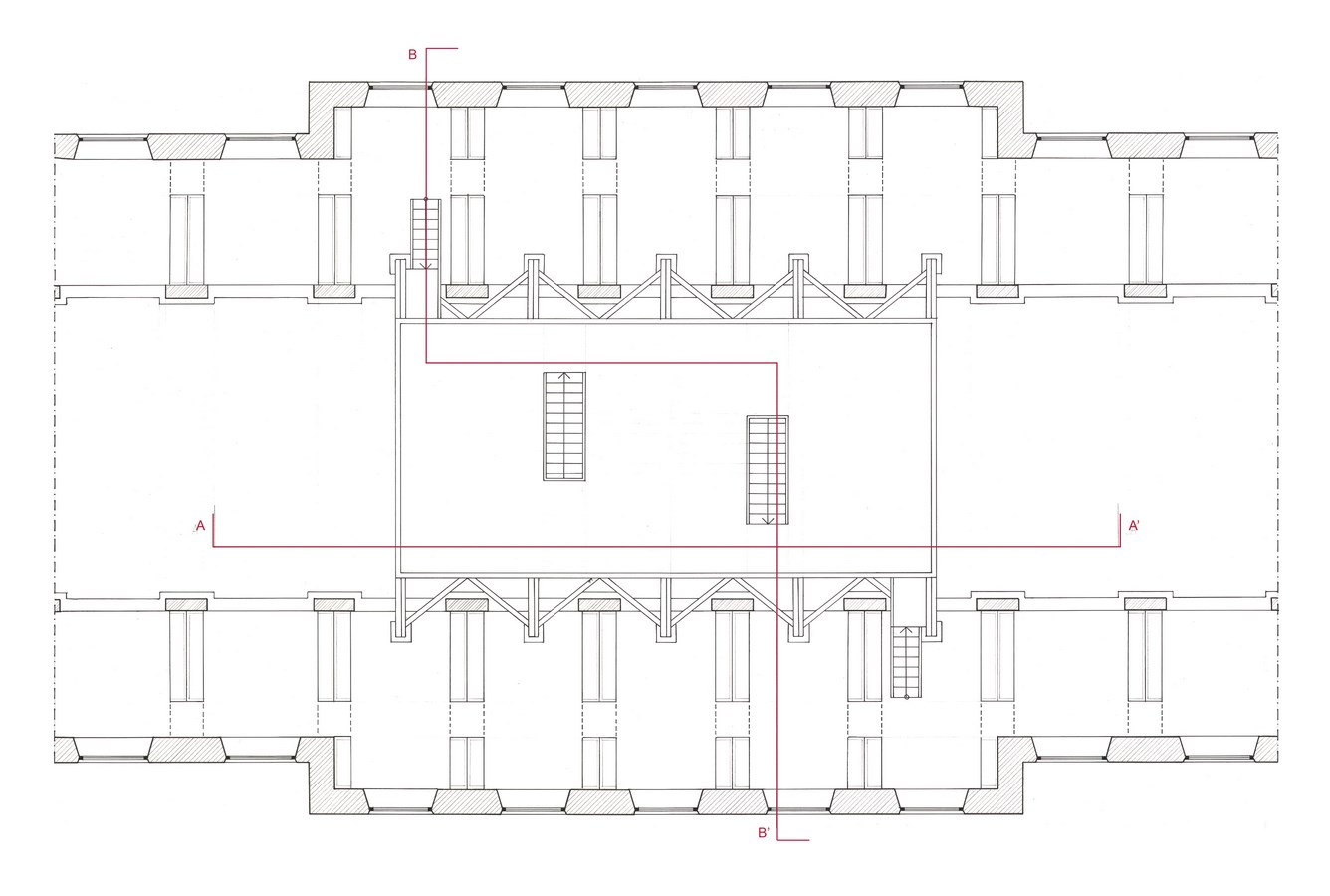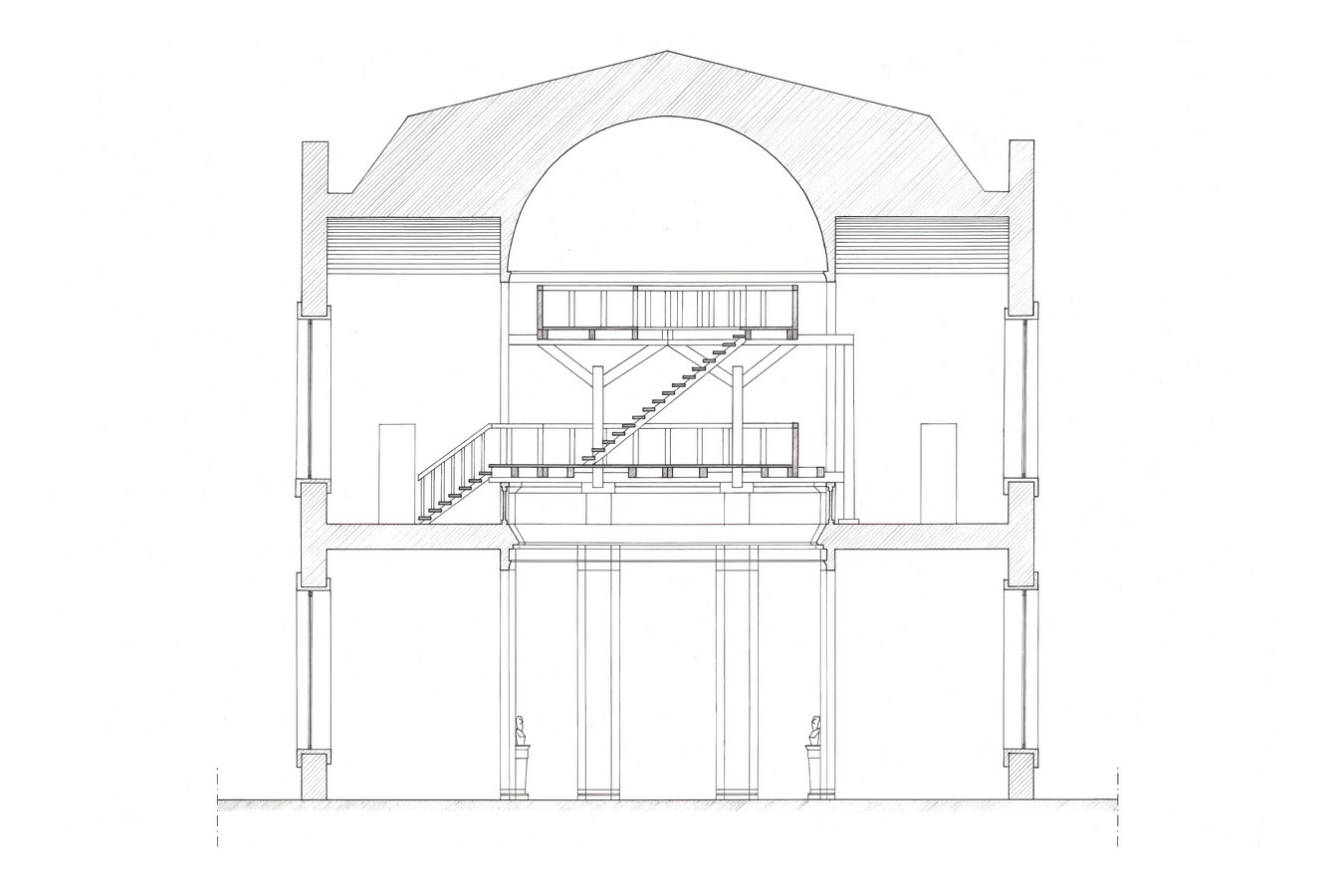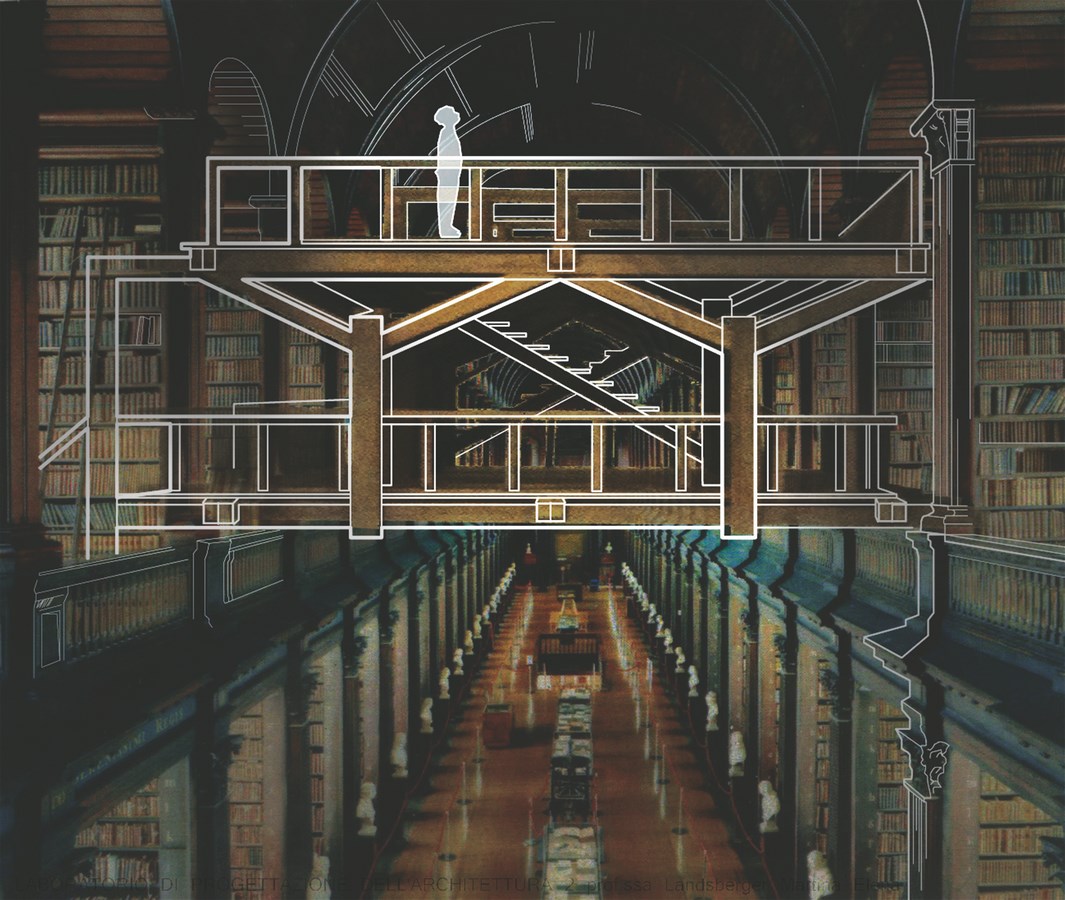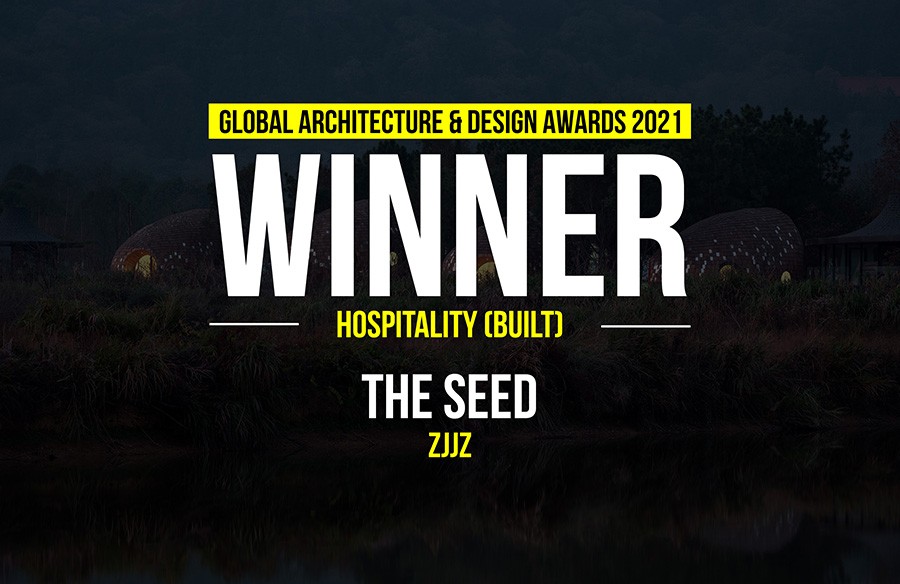Chiasmo was developed as a meta-design project during the second year of Bachelor courses (2013/14) at the Polytechnic of Milan: the task given was to design a temporary wooden pavilion in a pre-assigned place. We had the luck of being assigned the Long Room, into the historical library of the Trinity College, in Dublin, whose spaces, volumes and voids, rhythms and visual sequences of repetitive elements immediately became the aspiring model for our concept.
Architects: Fabio Dell’Arciprete, Alessandro Cugola, Nayeon Kim
Location: Long Room, Trinity College library, Dublin
Status: Concept



As for the program, the pavilion should not have been characterised in any way towards a precise function, but rather have the role of a gathering, collective space into the determined site. As for the technical side, the structure should have been conceived and realized using only moulded wooden elements (12*6cm section), which basically affected the constructive and structural solution, making those issues fundamental from the very beginning.

The analytical reading of the site and the constraints given lead us to develop the concept: a floating space in the volume of the long gallery, hanged to the second level floor, a platform in the point of climax of the existing structure. Chiasmo / Chiasmus (Greek for “cross structure”) is a figure of speech in which an imaginary intersection between two pairs of words is created in verse or prose. This cross represents this project’s matrix: new paths cross in a pavilion that breaks the rhythm of the Long Room (the historic library at Trinity College, Dublin), by being placed in the middle of the giant nave. In the pavilion, the isolated niches of the library finally meet each other through the narrow stairs of the pavilion.


The stairs lead to the highest level and appear to touch the barrel vault. Everything is done with the utmost lightness: the supports, hidden in niches, give the whole structure a floating sensation, like a suspended bridge connecting spaces. The suspended system allows to gain a space that is the materialisation of the normally utopic possibility to have a different overlook and perspective of the central gallery.


Our design process fully tried to address the project as a unity, showing a strong link between the architectural theme and the structural issues. Along with the search for an ethereal, vanishing, floating space, the constructive specificity of the project was carried out very carefully, in order not to deteriorate the initial concept. The study of Japanese and North-European timber tradition led us to define an integrated system, which in our vision characterises the architectural space as an independent unity and highlights the lightness of the structure in relation to the existing library.



Fabio Dell’Arciprete studied at the Polytechnic of Milan, where he met Nayeon and Alessandro (2012) who collaborated with on some academical projects, for which they shared an architectural vision deeply shaped by the analysis of the context and the attention towards the built environment.
Since the MSc years he increased his interest into historical architecture and cultural heritage. After graduation (2017), he approaches the academic research field through collaborations with the Dept. of Civil and Environmental Eng. and the Dept. of Architecture and Building Eng. of the Polytechnic of Milan about the theme of structural issues and seismic strengthening of historical buildings, along with some scientific papers.
He is now involved in the scientific and technical team of the Program for the preservation of the Basilica di Santa Maria delle Grazie in Milan, the church and convent of Da Vinci’s “Last Supper”.
Nayeon Kim is a South Korean architect working in Milan. She graduated in Art and Psychology from Duksung Women’s University of Seoul and started to work with MOTOElastico, Simone Carena and Marco Bruno for graphics and architectural design in Seoul till 2008.
The experience in Europe has begun with the master’s in Urban Vision and Architectural Design in Domus Academy, Milan. After the master’s degree, she has collaborated with Francesco Librizzi, Nunzio Gabriele Sciveres, Stefano Mirti, Martina Landsberger, Marco Zanuso Jr and OBR for art activities, interior design and architectural projects.
In the year 2012 she started studying Architecture at Polytechnic of Milan and completed the courses in the year 2017 with honors.
Alessandro Cugola is an architecture student from Verona. After completing his Bachelor between the Milan Polytechnic and the University of Arts of Berlin, he was worked in Berlin for two years in different offices, taking part to different international projects and competitions.
He is enrolled for an international master’s in Architecture and Urban Studies at the Sint-Lukas Architecture School of Bruxelles, where he has focused his interest in participative architecture and activism, testing alternative and complementary approaches to urban planning.
He is currently (2018) spending one semester in Copenhagen for an exchange in Political Architecture at the Danish Royal Academy of Fine Arts.





